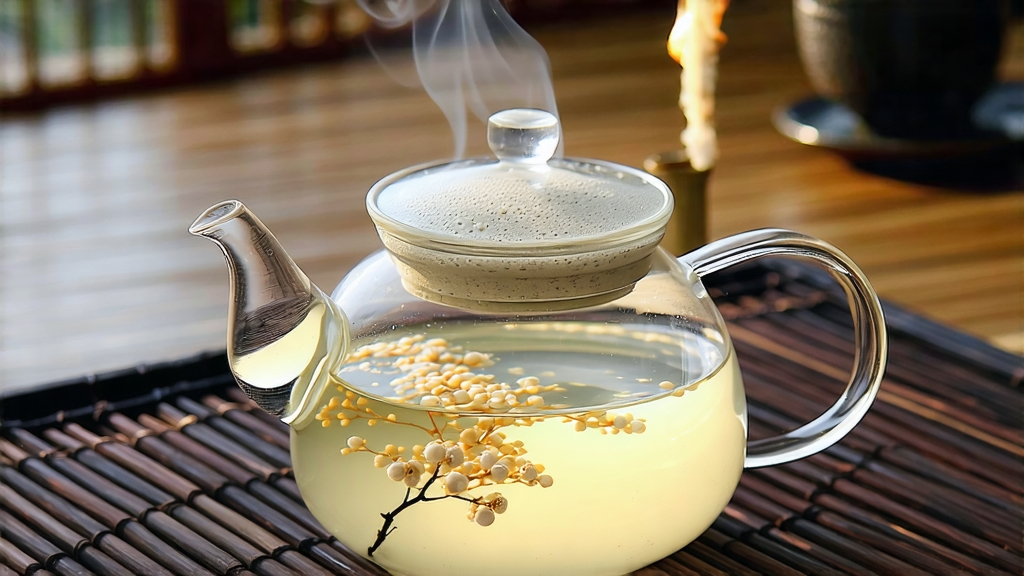
Among the six great families of Chinese tea, white tea is the quietest child, and within that hush White Hair Silver Needle—Bai Hao Yin Zhen in Mandarin—speaks in the softest voice. Yet its whisper travels farther than most shouts: once the secret tribute of Song-dynasty emperors, today it is the first white tea most connoisseurs outside China seek, and the last they ever forget.
Legend places its birth in the misty north-east of Fujian province, where the Min-Yun mountain range nudges the East China Sea. Around 1796, so the story goes, a tea-grower named Wei Chen noticed that the earliest spring buds, still wrapped in downy white “hairs,” resisted the green-tea pan-firing he attempted. Instead of discarding them he laid the buds on bamboo trays in the shade of his ancestral hall. A week of spring mountain breeze and mild sun dried them naturally; the liquor they yielded was the colour of first moonlight, the flavour of dew on pear blossom. Imperial officers later carried the tea to Beijing; the Guangxu Emperor (r. 1875-1908) declared it one of the “Ten Famous Tributes,” and the name Yin Zhen—“Silver Needle”—was sealed.
Modern geography refines the romance: authentic Silver Needle may only hail from two counties—Fuding and Zhenghe—where three factors converge: a red-yellow mountain soil rich in quartz and trace minerals; a subtropical maritime climate that gifts 1 800 mm of rain and 1 800 hours of fog each year; and the indigenous Da Bai (“Big White”) tea tree cultivar whose buds can reach 3.5 cm, longer than any other variety. When the overnight temperature stays between 14-19 °C and the dew point is high, the hairs swell, turning each bud into a tiny fibre-optic cable that traps aroma molecules—nature’s own aromatic vault.
The picking window is brutally short: from the first Wednesday after Qingming festival until Grain Rain—about fifteen days—only on windless mornings between 7 a.m. and 10 a.m. when the sun is still mild. Two leaves and a bud? Not here. Silver Needle demands the unopened standard: a single plump bud sheathed in its own protective scale. Experienced pickers can gather barely 500 g in a day; 30 000 buds are needed for one liang (50 g) of finished tea.
Once back at the factory the buds are not “killed-green” as in green tea; instead they are merely withered and dried, allowing slow enzymatic oxidation that hovers between 5 % and 12 %. The traditional method, still practised for the top grade, is called “two suns and two moons.” Buds are spread two fingers deep on reed-woven trays and left under morning sun for twenty minutes—just long enough for the surface moisture to evaporate—then moved indoors to wither on raised bamboo racks for 36-48 hours while mountain wind is funneled through louvered windows. A second, shorter sunning fixes the colour, and finally a charcoal basket at 40 °C finishes the drying. The entire process is monitored by nose: when the aroma shifts from fresh cucumber to ripe honeydew and finally to a faint orchid note, the tea master calls a halt.
Because no high heat is applied, Silver Needle keeps its antioxidant catechins in their original state; the downy hairs, rich in amino acid L-theanine, remain intact. Laboratory tests show that a 250 ml cup of Silver Needle brewed at 80 °C contains 1.8 times the GABA of a comparable cup of Dragon Well green tea, yet only one-third the caffeine of a young sheng pu-erh. The result is a liquor that calms without sedating, sharpens focus without jitter.
To brew it Western-style, use 3 g for a 350 ml glass pot, water at 75 °C, and a four-minute steep. The buds will stand upright like miniature ivory pagodas, then slowly sink, releasing thin silver streams of bubbles—an effect Chinese poets call “snow falling upwards.” For gongfu service, a 120 ml gaiwan and 5 g of leaf allow multiple infusions: 30 s, 25 s, 35 s, 50 s, 70 s, 90 s. Each steep reveals a new colour arc: pale platinum, very light jonqu